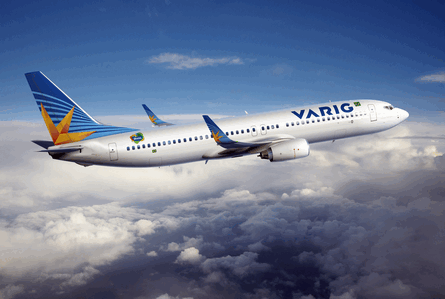Brazilian airline group Gol Linhas Aereas Inteligentes is undergoing a radical and fast-paced fleet transition that will see the 737-800 short field performance (SFP) become its primary aircraft type.
The group, which includes Gol and Varig successor VRG, phased out its last Boeing 767 earlier this month and will retire its last 737-300 in December. To offset the lost capacity, it has been taking new 737s at a breakneck speed with a total of 30 additional aircraft to be brought into the fleet in 2008 alone.
The group's fleet will consist only of the 737-700, -800 and -800 SFP aircraft from the end of this year with the non-SFP -800 also slated to be phased out over the next four years.
 |
|---|
© Boeing |
Gol was launch customer of the 737-800 SFP in 2006 and has commitments for 100 of the type. It will take five more over the last four months of this year, giving it 37 so far. Another 15 will be delivered next year, followed by 12 in 2010, 10 in 2011, 11 in 2012, 11 in 2013 and a final four in 2014.
Gol vice-president technical Fernando Rockert de Magalhães says Gol initially acquired the 737-800 SFP to enable it to operate 180-seat aircraft at Rio de Janeiro's Santos Dumont airport, where the runway is less than 1,500m (4,900ft) long. But the 737-800 SFP also came into its own at Sao Paulo's Congonhas airport, Gol's largest base, following last year's fatal overrun of a TAM Airbus A320.
After the accident, Brazilian authorities reduced the useable length of Congonhas' runway to 1,690m (5,543ft). "The SFP was meant for Santos Dumont and some medium-range flights from Congonhas. Then it changed at Congonhas and thank god we had the SFP as it allowed us to operate in and out of Congonhas without restrictions," Rockert says.
He adds that the group has since stopped operating the non-SFP 737-800 at Congonhas because "otherwise we would have to take out more than 30% of the seats on the aircraft".
The group still operates 19 non-SFP 737-800s and plans to have 28 of the type by the end of this year. But from next year it will begin returning the aircraft as their leases expire and plans to retire its last -800 in 2013.
Gol and VRG, which are now in the process of integrating their operations and merging their pilot groups, also now operate a combined fleet of 15 737-300s and 38 737-700s.
But Rockert says all 15 737-300s, which can only carry 110 passengers instead of the normal 136 at Congonhas because of the current restrictions, will be returned to lessors by the end of this year. Rockert says the 737-700 will be kept in the fleet to serve thin domestic routes, including from Congonhas, but the group will not add any more of the type after it takes its 40th -700 later this year.
VRG also operated until earlier this month a fleet of nine Boeing 767-300ERs. But Rockert says the last 767 flight was flown on 1 September, ending the group's short-lived and unprofitable experiment in long-haul flying.
Source: Flight International























